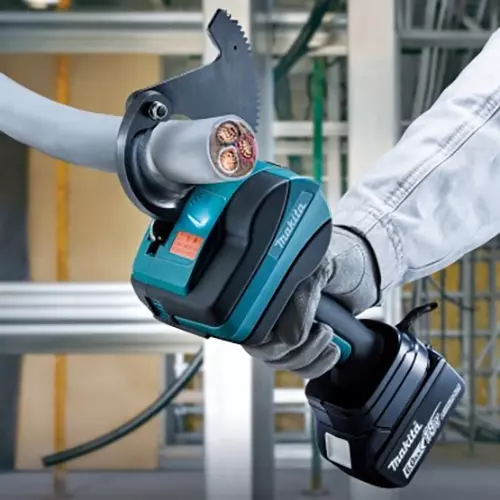What is Cable Cutting?
Cable cutting, also known as cord-cutting or cord-shaving, refers to the practice of canceling traditional cable or satellite TV subscriptions and opting for alternative viewing methods. This trend has gained significant momentum in recent years due to the rising costs of cable packages and the proliferation of streaming services offering on-demand and live TV content.
The primary reasons driving cable cutting include:
- Cost Savings: Traditional cable TV packages can be expensive, often costing hundreds of dollars per month, especially when bundled with internet and phone services. By cutting the cord, consumers can potentially save a substantial amount of money by subscribing to more affordable streaming services.
- Flexibility and Customization: Cable TV packages often include a large number of channels that viewers may not want or need. Streaming services, on the other hand, allow viewers to pick and choose the specific content they are interested in, providing greater flexibility and customization options.
- On-Demand and Binge-Watching: Streaming platforms like Netflix, Hulu, and Amazon Prime Video offer vast libraries of on-demand content, enabling viewers to watch their favorite shows and movies at their convenience, without being tied to a specific schedule or channel lineup.
Cable cutters typically rely on a combination of streaming services, digital antennas for local channels, and on-demand platforms to access their desired content. This approach offers greater control over viewing experiences and aligns with the growing preference for personalized and on-demand entertainment.
Table of Contents
The Rise of Streaming Services
The rise of streaming services has been a major driving force behind the cable-cutting movement. Platforms like Netflix, Hulu, and Disney+ have revolutionized the way we consume entertainment, offering vast libraries of movies, TV shows, and original content at a fraction of the cost of traditional cable subscriptions.
Netflix, the pioneer of streaming, has seen meteoric growth, amassing over 200 million subscribers worldwide. Its success has paved the way for other major players, such as Hulu, Amazon Prime Video, and Disney+, to enter the market with their own compelling offerings.
The popularity of streaming services can be attributed to several factors. First and foremost, they provide unparalleled convenience, allowing viewers to watch their favorite shows and movies on-demand, without being tethered to a traditional TV schedule. Additionally, the ability to binge-watch entire seasons at once has become a cultural phenomenon, catering to modern viewing habits.
Moreover, streaming services have invested heavily in producing high-quality original content, often rivaling or surpassing the quality of traditional cable and network programming. Shows like “Stranger Things,” “The Mandalorian,” and “The Handmaid’s Tale” have garnered critical acclaim and massive followings, further solidifying the appeal of streaming platforms.
As more households embrace streaming as their primary source of entertainment, the growth in subscriptions has been staggering. According to recent industry reports, the number of streaming subscriptions in the United States alone has surpassed 300 million, with many households subscribing to multiple services to cater to their diverse viewing preferences.
Cost Savings of Cable Cutting
Cutting the cord and ditching traditional cable TV services can lead to significant cost savings for many households. The average monthly cost of a cable or satellite TV subscription in the United States can range from $60 to $200 or more, depending on the package and additional fees. In contrast, streaming services typically offer more affordable options, with many popular services costing between $5 and $15 per month.
By opting for streaming services instead of cable, consumers can potentially save hundreds of dollars annually. For example, if you were to subscribe to a few popular streaming services like Netflix, Hulu, and Disney+, the combined cost would still be lower than the average cable bill. Additionally, streaming services often provide the flexibility to subscribe or cancel at any time, allowing users to adjust their subscriptions based on their viewing preferences and budget.
Moreover, cable companies often bundle TV services with internet and phone services, making it challenging to unbundle and obtain only the desired services. Streaming services, on the other hand, can be subscribed to individually, giving consumers more control over their entertainment expenses.
It’s important to note that while streaming services can provide significant cost savings, the total cost may vary depending on the number of services subscribed to and the internet package required to support streaming. However, for many households, the potential savings from cutting the cable cord can be substantial, especially when combined with other cost-saving measures like utilizing free over-the-air TV channels and taking advantage of promotional offers from streaming providers.
Cord-Cutting Trends
The cord-cutting phenomenon has been gaining significant momentum in recent years, with an increasing number of households opting to ditch traditional cable or satellite TV subscriptions in favor of streaming services. According to industry reports, the number of cord-cutter households in the United States has been steadily rising, with millions of households cutting the cord each year.
Year-over-year trends indicate a consistent growth in cord-cutting, driven by factors such as the availability of high-quality streaming content, the desire for more flexible and cost-effective entertainment options, and the proliferation of smart TVs and streaming devices. The COVID-19 pandemic further accelerated this trend, as people spent more time at home and sought alternative ways to access entertainment.
When it comes to the demographics of cord-cutters, the trend is particularly pronounced among younger generations, who have grown up in the digital age and are more accustomed to consuming content on-demand. Millennials and Gen Z consumers are leading the charge, embracing the convenience and personalization offered by streaming platforms.
However, cord-cutting is not limited to younger demographics. An increasing number of older adults and families are also recognizing the benefits of cutting the cord, including cost savings and the ability to access a wide range of content on their own terms.
As streaming services continue to evolve and offer more diverse and high-quality content, experts predict that the cord-cutting trend will continue to gain momentum, potentially disrupting the traditional cable and satellite TV industry in the long run.
Live TV Streaming Options
For those seeking a cable-like experience without the traditional cable subscription, live TV streaming services have emerged as a viable alternative. These services offer a bundle of live channels, similar to a cable or satellite package, but delivered over the internet.
One of the most popular live TV streaming options is YouTube TV. With a base package starting at $64.99 per month, YouTube TV provides access to over 85 channels, including popular networks like ABC, NBC, CBS, Fox, ESPN, and more. The service also offers unlimited cloud DVR storage and the ability to stream on multiple devices simultaneously.
Hulu + Live TV is another compelling option, combining Hulu’s on-demand library with a live TV package. For $69.99 per month, subscribers get access to over 75 live channels, including local networks, sports channels, and cable favorites. Hulu + Live TV also includes unlimited cloud DVR storage and the ability to stream on multiple devices.
DirecTV Stream, formerly known as AT&T TV, is a live TV streaming service that caters to those seeking a more comprehensive channel lineup. With packages ranging from $69.99 to $149.99 per month, DirecTV Stream offers a wide variety of channels, including premium networks like HBO, Showtime, and Starz. The service also provides cloud DVR storage and simultaneous streaming on multiple devices.
While channel lineups and pricing may vary across these services, they generally offer a good selection of popular networks, sports channels, and local broadcasts. Additionally, many live TV streaming services provide features like cloud DVR, on-demand libraries, and the ability to stream on multiple devices, making them a flexible and convenient alternative to traditional cable or satellite TV.
Antennas and Over-the-Air TV
One of the key advantages of cutting the cable cord is the ability to access free over-the-air (OTA) broadcast channels using an antenna. With a one-time investment in an indoor or outdoor antenna, you can receive crystal-clear high-definition signals for major networks like ABC, CBS, NBC, Fox, and PBS, as well as local channels in your area.
The range of an antenna depends on several factors, including its design, placement, and your proximity to broadcast towers. Indoor antennas typically have a range of around 25 miles, while outdoor antennas can pick up signals from much farther away, often up to 60 miles or more. By positioning your antenna strategically and using amplifiers or signal boosters if needed, you can maximize your channel availability.
One of the biggest benefits of OTA TV is the exceptional picture quality. Since the signals are transmitted uncompressed, over-the-air channels often look better than their cable or satellite counterparts, providing a true high-definition experience. Additionally, many local stations now broadcast in 4K Ultra HD, offering even more stunning visuals for those with compatible TVs.
Depending on your location, you may be able to access a wide range of channels through an antenna, including major networks, local news and weather stations, educational programming, and even specialty channels like sports or foreign language broadcasts. Online tools and apps can help you determine which channels are available in your area and guide you in choosing the right antenna for your needs.
On-Demand and Catch-Up Services
One of the primary benefits of cutting the cable cord is the ability to access a vast library of on-demand content from various streaming services. Services like Hulu, Amazon Prime Video, and network-specific apps like NBC’s Peacock or ABC’s app offer a wealth of previously aired shows and movies that can be watched at your convenience.
Hulu, in particular, has become a popular choice for cord-cutters as it provides access to current seasons of many popular TV shows from various networks, often just a day after they air. This allows viewers to stay up-to-date with their favorite shows without the need for a traditional cable subscription.
Amazon Prime Video, which comes bundled with an Amazon Prime membership, also offers a extensive selection of on-demand content, including Amazon Originals, movies, and TV shows from various networks and studios.
Additionally, many networks have their own dedicated streaming apps, such as NBC’s Peacock, ABC’s app, and CBS All Access, which allow viewers to catch up on recently aired episodes of their shows, as well as access a library of past seasons and exclusive content.
These on-demand and catch-up services have revolutionized the way we consume television content, providing flexibility and convenience to viewers who no longer want to be tied to a traditional cable schedule or package.
Streaming Devices and Smart TVs
Streaming devices and smart TVs have revolutionized the way we consume content, making it easier than ever to cut the cord and access a vast array of streaming services. These devices serve as gateways to a world of entertainment, offering a seamless and convenient viewing experience.
One of the most popular streaming devices is the Roku, known for its user-friendly interface and extensive channel selection. With a Roku device, you can access popular streaming services like Netflix, Hulu, Amazon Prime Video, and more, all from a single platform. The Roku remote and on-screen menu make navigation a breeze, allowing you to easily browse and search for your favorite shows and movies.
Apple TV, another prominent streaming device, offers a sleek and intuitive experience for Apple users. Seamlessly integrated with the Apple ecosystem, it allows you to access your iTunes library, rent or purchase movies and TV shows, and stream content from various services. The Apple TV remote, with its touch-based navigation and Siri integration, provides a convenient and modern way to control your viewing experience.
Amazon’s Fire TV devices, including the Fire TV Stick and Fire TV Cube, are popular choices for those who prefer the convenience of Alexa voice control. With Fire TV, you can easily access Amazon Prime Video, as well as other popular streaming services. The Fire TV Cube even doubles as an Alexa-enabled smart home hub, allowing you to control compatible smart home devices with your voice.
Android TV, a platform developed by Google, is integrated into many smart TVs and streaming devices from various manufacturers. It offers a familiar Android-based interface and seamless integration with Google services like YouTube, Google Play Movies & TV, and Google Assistant. Android TV devices provide a versatile and customizable streaming experience, allowing you to install apps and games from the Google Play Store.
Smart TVs, which come with built-in streaming capabilities, have also gained popularity among cable cutters. Major brands like Samsung, LG, Sony, and Vizio offer smart TV platforms that allow you to access popular streaming services directly from your television. These platforms often include popular apps like Netflix, Hulu, Amazon Prime Video, and more, eliminating the need for a separate streaming device.
Many streaming devices and smart TVs also offer advanced features such as 4K and HDR support, ensuring a high-quality viewing experience. Some devices even support voice control and integration with virtual assistants like Alexa or Google Assistant, making it easier to search for content and control your viewing experience with simple voice commands.
Overall, streaming devices and smart TVs have made it incredibly convenient for cable cutters to access a wide range of content from various streaming services, all while enjoying a user-friendly and feature-rich viewing experience.
Bundling and Skinny Bundles
As cable cutting continues to gain momentum, a new trend has emerged: bundling streaming services and opting for “skinny bundles.” These strategies offer a happy medium between traditional cable packages and a la carte streaming services, providing a curated selection of channels at a more affordable price.
One approach is to combine multiple streaming services, such as Netflix, Hulu, and Disney+, to create a personalized bundle that caters to your household’s viewing preferences. This allows you to access a diverse range of content while potentially saving money compared to a traditional cable package.
Another option is to subscribe to a “skinny bundle,” which typically includes a slimmed-down package of popular cable channels at a lower cost than a full-fledged cable subscription. Services like Sling TV, Philo, and YouTube TV offer these skinny bundles, allowing you to pick and choose the channels you want without paying for those you don’t watch.
By bundling streaming services or opting for a skinny bundle, cable cutters can enjoy a more tailored and cost-effective entertainment experience. These options provide flexibility, allowing you to mix and match services based on your viewing habits and budget. Additionally, many of these services offer no-contract options, further increasing the appeal for those seeking a commitment-free alternative to traditional cable packages.
Challenges of Cable Cutting
While cable cutting offers significant cost savings and increased flexibility, it does come with some challenges. One of the primary drawbacks is limited access to live sports, news, and local channels. Many popular sports leagues and events have exclusive broadcast rights with cable or satellite providers, making it difficult for cord-cutters to access these programs without additional subscriptions or services.
Similarly, access to local news and programming can be challenging for cable cutters, as these channels are often tied to traditional cable or satellite packages. While antennas can provide access to some local channels, reception quality can vary, and not all channels may be available in certain areas.
Another challenge for cable cutters is the potential for data caps and internet speed requirements. Streaming high-quality video content can consume a significant amount of data, and households with multiple users streaming simultaneously may quickly reach their data limits, resulting in additional charges or throttled internet speeds.
Moreover, streaming services often require a stable and fast internet connection to deliver a seamless viewing experience. Households with slower internet speeds may experience buffering, lag, or reduced video quality, which can detract from the overall viewing experience.
The Future of Cable and Streaming
The cable and streaming industries are rapidly evolving, driven by technological advancements and shifting consumer preferences. As more households embrace cord-cutting, traditional cable providers are facing immense pressure to adapt and innovate.
One of the most significant trends shaping the future is the rise of streaming services. With platforms like Netflix, Amazon Prime Video, and Disney+ continuing to invest in original content and expanding their libraries, consumers are increasingly turning to these services for their entertainment needs. This trend is likely to continue, with more streaming platforms entering the market and offering niche content to cater to diverse audiences.
Another factor that will shape the future is the proliferation of 5G technology. With faster internet speeds and lower latency, 5G will enable seamless streaming of high-quality content on mobile devices, further fueling the growth of on-the-go entertainment consumption.
Virtual and augmented reality technologies are also expected to play a significant role in the future of streaming. Immersive experiences, such as virtual reality movies and interactive storytelling, could revolutionize the way we consume content, offering a more engaging and personalized experience.
Moreover, the integration of artificial intelligence and machine learning algorithms will enhance content recommendation systems, providing users with more personalized and relevant suggestions based on their viewing habits and preferences.
As consumer habits continue to evolve, traditional cable providers may need to embrace bundling strategies, offering slimmed-down packages or partnering with streaming services to remain competitive. However, the future may also see the emergence of new business models, such as ad-supported streaming services or hybrid models that combine subscriptions and advertising revenue.
Ultimately, the future of cable and streaming will be shaped by the ability of providers to adapt to changing consumer demands, leverage emerging technologies, and offer compelling content at competitive prices. As the lines between traditional cable and streaming continue to blur, the industry will witness further disruption and innovation, with the winners being those who can seamlessly cater to the evolving needs of viewers.



